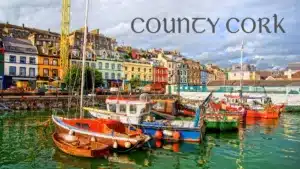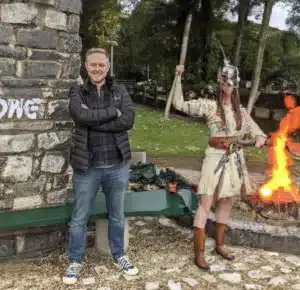The Making of a very Irish Name – Sinéad O’Connor
We've lost one of Ireland’s great artists and singers - Sinéad O’Connor. Much has been written about her life, but it’s enough to say that the lady was a unique talent and died a way too early. Today, we’ll honour her memory in a way that we know best by taking a look at her Irish first name and surname.

MEETING SINÉAD O’CONNOR FOR THE FIRST TIME.
One evening, way back in 1987, I was working in a big city in south America and found myself sharing a taxi with a couple from New York. “Hey, you’re from Ireland, we’ve just came across this wonderful Irish singer who lives in New York – her name is ‘Sinny-ad’ O’Connor”.
Nope, never heard of her – but I knew that first name was probably “Sinéad” which is pronounced “Shin-ade” in English. This was my first “meeting” with Sinéad O’Connor but certainly not my last and I became a fan of her interpretation of classic Irish songs such as “The Foggy Dew” and “Danny Boy”.
HOW DO YOU PRONOUNCE A “J” IN IRISH?
Have you ever noticed that many Irish boys’ and girls’ names start with the letter “S”? You have girls’ names like “Sinéad” and “Siobhán” or boys’ names such as “Seán” and “Séamus”? These names originated in Ireland sometime around the turn of the first millennium (1000AD) and come from the French and English versions of many biblical and greek names. The thing to notice about these names is that they start with a “J” – which does not exist in the Irish language. So, boys names’ like:
- The French name “Jean” became “Seán” in Irish (pronounced Shawn) – and eventually became “John” in England.
- “James” became “Séamus” in Irish (pronounced Shay-mus).
- The French name “Jeahanne/Jeanne” became “Siobhán” (pronounced “Shiv-awn”) in Irish – and eventually became “Joanne”, “Joan” or “Joanna” in England.
- The French name “Jeanette” became “Sinéad” (pronounced “Shin-ade”) in Irish – and eventually became “Jane” or “Janet” in England.
All of these Irish names enjoyed a resurgence in Ireland from the 1960’s onwards – and would have been a popular choice for Sinéad O’Connor’s parents at the time.
THE LAST HIGH-KINGS OF IRELAND.
Speaking of old Irish names for girls and boys, if you go back even further you’ll come across a wide range of names that have existed in Ireland for thousands of years. One example is the boy’s name “Conchobar” (say it fast and it will sound like “Conor”). It translates into English as “lover of hounds” and was typical of many Irish names that described a physical feature of a person or their particular traits while hunting or on the battlefield.
Due to the popularity of this boy’s name, a number of unconnected Irish tribes evolved in Ireland with the title of “Ua Conchobair” meaning “descendants of Conchobar”. The most well-known of these tribes were the “Ua Conchobair” of Connacht – which provided us with the two last kings of Ireland.
The name became anglicised over the years – first into “O’Connor” and sometimes with the “O” dropped to become “Connors”.
Of course, the boy’s name of “Conchobar” eventually came back into use around the world with the simplified spelling of “Conor”.
How about you? Do you have any O’Connor/Connors – or maybe a Conor in your Irish family tree? How about a Sinéad, Siobhán, Seán or “Séamus”?
So, to Sinéad O’Connor – her presence and artistry will be greatly missed. However, every time I listen to the recordings she left behind I will hear those deep Irish roots coming out in that unique voice of hers. May she rest in peace.
That’s it for this week. As always, do feel free to share your own family surnames, places and stories.
Slán for now,
Mike.







Only Plus Members can comment - Join Now
If you already have an account sign in here.